Recommendation points
- Fraud with the delivery of concrete and reinforcement
- How to guarantee volume, quality and brand
- Calculation of the required volume
- Formwork
- Choice of delivery method
- Filling: independently or by contractor
Almost all concrete structures are responsible, which means that the reliability and safety of the entire structure depends on the quality of the material at the pouring stage. Unfortunately, the issue of buying, ordering and delivering high-quality concrete is rather slippery, but we will try to reveal it in more detail..
For unknown reasons, civil engineering has developed a very negligent attitude towards the design and construction of reinforced concrete structures. It would be fine if it was only about private developers, who, at least, are reinsured by an excess safety margin. But in commercial construction, neglecting the norms of conducting monolithic works means deliberately condemning the building to short-term operation and premature destruction. Therefore, both self-construction implementers and those who entrust construction to contractors will not hurt to take the process of organizing concrete work into their own hands..
Fraud with the delivery of concrete and reinforcement
The first difficulties will arise already at the stage of choosing a material supplier. Areas with active development for private housing are full of street advertisements for the sale of concrete. In fact, most dealers turn out to be trivial resellers who carry out only transportation and sometimes provide concrete pump services.
A logical question arises: what is the reseller’s benefit, because the cost of concrete is the same as at the plant, and sometimes even lower? And the thing is that the customer is not given a factory invoice, but a fictitious one, while the factory initially purchases less concrete than was ordered. During delivery, the mixer can be loaded 2–3 m3 sand and crushed stone, especially the arrogant just bring and fill in underweight. All claims about the lack of concrete are smashed against the wall of iron arguments that the volume was incorrectly calculated, the mixture leaked into the pillow, inflated the formwork, remained in the mixer or pump, etc..
With reinforcement, things are not in the best way. The scheme is the same: on the basis of rolled metal, a deliberately smaller volume is purchased, which is transferred to the customer. It is very simple to hide the fact of shortage: along the way, the reinforcement is cut in non-standardized pieces, on the spot explaining that the order was collected from the leftovers from the warehouse. And although the material as a whole remains usable, upon acceptance it turns out to be unrealistic to recalculate the actual footage and tonnage.
“Well, how big can the earnings be on such a scam?” – the interested reader will ask. Everything is quite transparent: when ordering 8 m3 and on delivery only 6 m3 the carrier “heats up” at least 5 thousand rubles. At the same time, one mixer can make up to ten flights per day. It’s easy to calculate profitability.
How to guarantee volume, quality and brand
We hasten to reassure you: you can protect yourself from fraud with concrete and reinforcement. The first rule is not to sign invoices on which the name of an outside company appears. If the transfer act is drawn up on a letterhead and backed up by the seal of a concrete plant or a metal warehouse, and there is also a stamp on the passage of weight control, the goods can be accepted safely. There is a nuance with the reinforcement: some of it could have been unloaded on the way, so you still need to recount.
In general, the developer will never be superfluous to visit a tour of the plant where concrete is produced, get acquainted with the conditions of the testing laboratory, and quickly assess the production process. The quality of concrete received from the factory directly is guaranteed by a certificate of conformity, which means that the manufacturer is responsible for any incidents.
From here, an important rule must be taken out: even if the plant does not have a small-tonnage transport for delivery, it would be much more correct to rent a mixer and a concrete pump, while guaranteeing the loading at the enterprise and paying the waybill on your own. With reinforcement, you can do even easier: add 2–3% to the order amount, cut the rods by 3 m for transportation by light van.
It is also necessary to take samples by making casts from the brought mixture in the form of cubes with a side of 100 mm. After full aging, the samples must be taken to the laboratory and the ultimate destructive capacity must be established, that is, simply to confirm the grade. This approach to business has repeatedly helped the builders to determine the discrepancy between the physical and mechanical properties of the foundation and to avoid the useless costs of erecting a box on an insufficiently solid foundation..
Calculation of the required volume
Not everyone can easily and with confidence calculate the internal volume of the formwork, and only a few specialists are capable of providing all technological tolerances for expansion and leakage. You need to understand that it is quite difficult to design a complex pile-grillage foundation or a monolithic basement floor yourself. It is better to entrust this task to a qualified architectural engineer, who will provide a map of loads and effects, determine the optimal reinforcement scheme, and most importantly, take into account the peculiarities of the formwork and cushion used, indicating the exact amount of concrete required.
You can try it yourself. It is not difficult to find the volume of a tape or plate; it is enough to simply multiply the three main dimensions. Complex foundations are calculated in a similar way – they simply divide the tape into straight sections and then summarize the results of the calculations. However, more complex designs require a more thoughtful approach. For example, the intrinsic volume of a monolithic basement floor or caisson can be found as the difference in the volumes of two spatial figures described by the internal and external surfaces of the structure..
In general, formwork swelling and mixture seeping into the pillow are not myths, but these losses never reach such high values. For example, on a foundation with a support area of 30–35 m2 even in case of violations in the device of the pillow, the mixture can sag by no more than 7-8 mm, that is, the leak will be about 0.25 m3 concrete – just over 1.5% of the concrete used. Formwork bloat is also a sensitive topic. Firstly, such phenomena must be avoided by all means, tightening the shields with hairpins or wire. But even with low requirements for the geometry of the reinforced concrete structure, the walls can move by only 15–20 mm, which on average is no more than 2.5–3%. In total, a stock of 5% will be quite enough, that is, when ordering up to 20 m3 concrete, one additional cube will completely cover all tolerances.
Formwork
The organization of monolithic work begins with the installation of a panel formwork system. In construction practice, there is such a tendency: to buy the cheapest second-rate timber, independently knock down the shields from it, and then install and somehow open up the casting mold. Subsequently, the lumber is simply turned into waste wood that is not used anywhere else. Needless to say about the quality of the formwork, which not only does not meet the elementary standards of mechanical strength, but is also prone to warping?
A more rational approach is to use materials with the expectation of their reuse. For this, timber is initially brought to the construction site for the truss system, the construction of scaffolding, the subfloor flooring, as well as particle boards. The timber and boards are knocked down into a strong supporting frame of the formwork, then the inner surfaces are sheathed with sheets, additionally laying a plastic wrap as a separator. Of course, the appearance of illiquid materials in the process cannot be avoided, but this way the costs will be much lower, and the quality of the formwork is much higher..
There is also the option of renting a professional formwork system. For the construction of a full basement floor with an area of 100 m2 in a monolithic way, it will be necessary to rent boards and racks for a total amount of 55-60 thousand rubles. This is slightly higher than the cost of lumber, however, labor costs for assembly are reduced, the need for disposal disappears, and the geometry and quality of surfaces of the finished structure are among the best..
Choice of delivery method
The transport conditions of the mixture can greatly affect its quality. As a rule, concrete delivery is carried out by mixers or concrete mixer trucks (ABS). For the transportation of mixtures with a reduced binder content, for example, for the manufacture of concrete, use cargo dump trucks. However, vintage concrete must be constantly in motion so that the mixture does not delaminate..
Building codes regulate the maximum travel time of concrete. On average, this is 3.5 hours under normal hiking conditions, but concrete can travel all 4 hours if the temperature outside is below + 10 ° C. It should be remembered that the maximum speed of movement of special vehicles cannot exceed 60 km / h, in reality, the ABS can cover about 40–45 km in an hour along a suburban highway with a surface, 30–40 km in the city and no more than 20– 25 km on dirt roads.
With large volumes of the order, it may be necessary to deliver several ABS. The practical limit of the mixer capacity is 15 m3, but such concrete trucks are extremely rare, as a rule, equipment up to 9 m appears in the fleet of concrete plants and carriers3. And even such transport may not reach the facility due to muddy roads, weight restrictions on crossings and bridges, or due to poor-quality equipped approach to the construction site. These nuances should be considered.
Filling: independently or by contractor
It will not be possible to distribute the entire mass of concrete over the formwork with one pair of hands, even in the case of making a conventional monolithic floor. A minimum of three workers are required: a feed throat manager, mixture distribution and pinning, and a person with a submersible vibrator. Therefore, you should undertake self-pouring of monolithic structures only if each of the team has an idea of such work and is clearly aware of their responsibilities..
To entrust monolithic work to handymen is not the best idea; you can do this only with low complexity or low responsibility of the structure being manufactured. If quality is taken as the main reference point, the best and fastest way to pour concrete will be contractors from large construction sites. They will also help you get to a good factory, a delivery man, and also tell you where to rent a concrete pump and formwork.

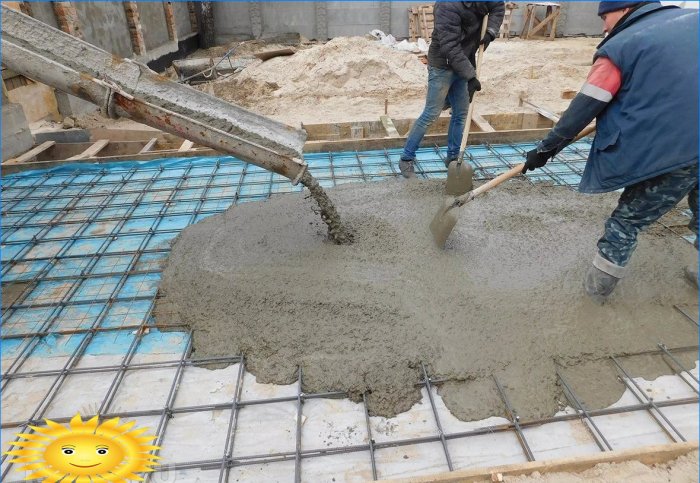
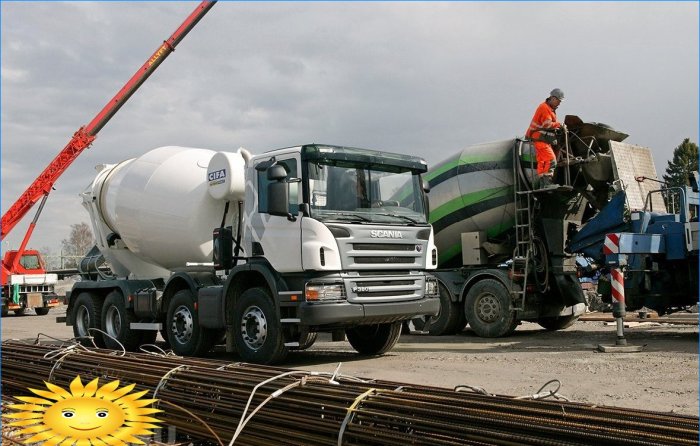
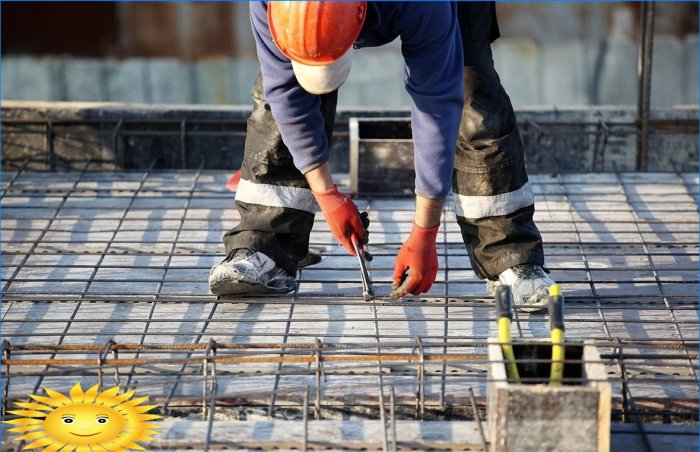
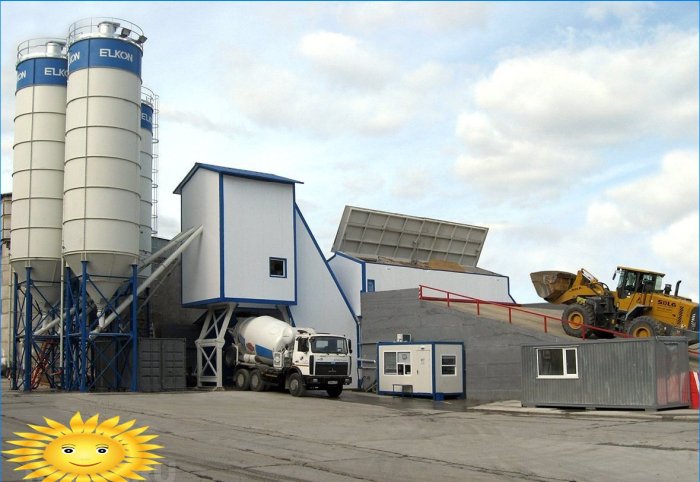


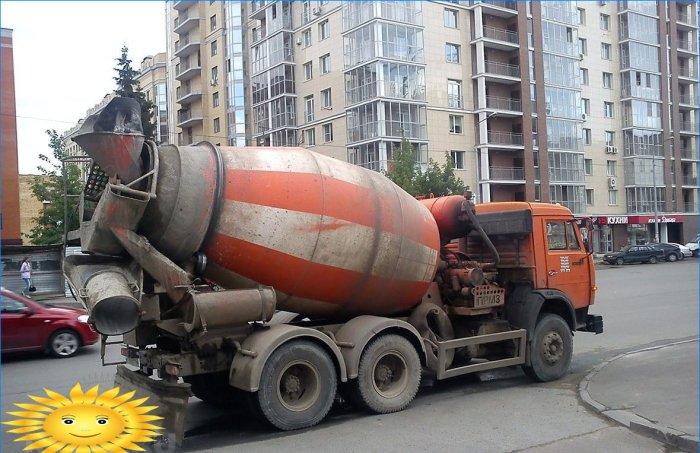
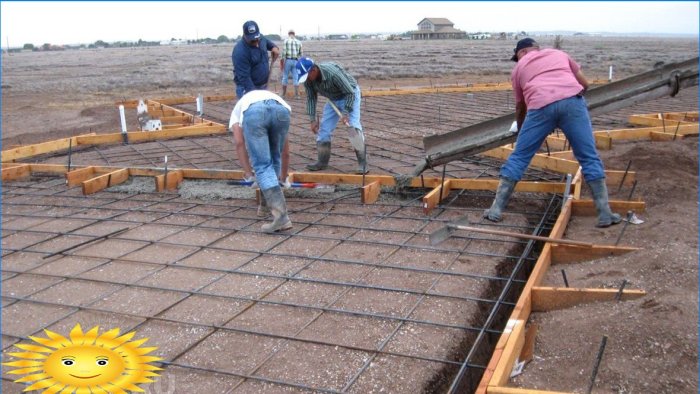
I’m curious about the process of selecting, ordering, delivering, and pouring concrete for monolithic works. Could you please provide some insights or guidance on how to navigate these steps effectively? Any tips or considerations for ensuring a successful outcome?
The process of selecting and pouring concrete for monolithic works involves several important steps. Firstly, it’s crucial to determine the right mix design for your specific project, taking into account factors like strength, durability, and workability. It’s advisable to consult with a concrete supplier or engineer to assist with this decision.
Once the mix design is established, you can order the required quantity of concrete from a reliable supplier. Consider factors such as the transportation time, availability of equipment for placing and finishing, and weather conditions that could affect the pour.
When the concrete is delivered, ensure that the working area is properly prepared and cleaned. Adequate reinforcement must be in place, and the formwork should be secure and well-built to contain the concrete.
During the pouring process, it is essential to maintain a consistent flow and avoid interruptions. Proper vibration techniques should be employed to eliminate air pockets and ensure optimal compaction. Adequate curing measures, such as covering the freshly poured concrete with insulating blankets or using curing compounds, should be implemented to promote proper hydration and prevent cracking.
Regular inspections throughout the process, such as checking for leakages, cracks, or any issues with the formwork or reinforcement, will help identify and address potential problems before they become major concerns.
In summary, take time to select the appropriate mix design, order from a reputable supplier, prepare the site meticulously, follow proper pouring techniques, and ensure proper curing. Seeking professional advice and conducting regular inspections will enhance the chances of a successful outcome for your monolithic concrete project.